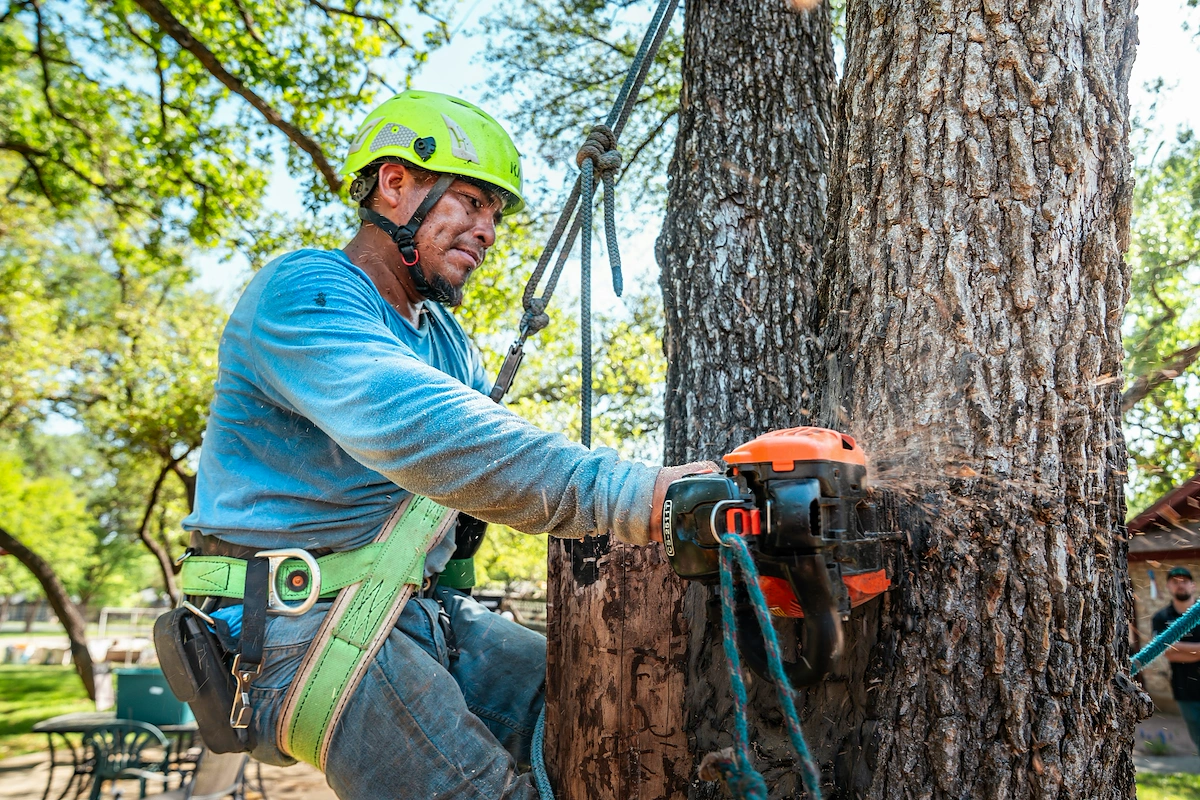Starting a media company is an exciting venture that combines creative storytelling and content creation with sharp business savvy. The rise of digital platforms has made it more accessible than ever to enter the market, but this accessibility also means competition is fierce.
This guide will take you through the practical steps of validating your business concept, securing funding, acquiring the right equipment, and hiring your team to help you launch a successful media company in the U.S.
Step 1: Plan your business and validate your idea
First, define your niche. A frequent misstep is trying to create content for everyone. Instead, focus on a specific audience, like producing podcasts for financial advisors or video content for sustainable fashion brands. Use Google Trends to check interest in your chosen topic over time.
To understand your potential audience better, you might want to create a simple survey using Google Forms. Ask about their content habits, what platforms they use, and what they would pay for. This direct feedback is more valuable than guesswork.
Analyze the competition
With your niche defined, examine who is already there. Use a platform like Ahrefs or SEMrush to see what content your competitors produce and how they attract an audience. This helps you find gaps in the market you can fill.
Estimate your startup costs
Your budget requires a realistic look at expenses. Initial equipment like a professional camera, microphones, and lighting can range from $5,000 to $25,000. Software subscriptions, such as Adobe Creative Cloud, add a recurring monthly cost of around $55 per license.
Do not forget administrative costs. Business registration can cost between $100 and $800 depending on your state and business structure. Setting aside $1,000 to $2,000 for initial legal advice on contracts is also a wise move.
Here are 3 immediate steps to take:
- Define a specific audience and content niche for your media company.
- Use a tool like SEMrush to analyze the top-performing content of three competitors.
- Create a startup budget that lists all potential equipment, software, and legal fees.
Step 2: Form your company and secure licenses
With your plan in place, the next move is to make your business official. Most media startups begin as a Limited Liability Company (LLC). It protects your personal assets and offers simpler tax filing than a corporation. Forming an LLC can cost between $50 and $500.
Many founders are tempted to start as a sole proprietorship for simplicity, but this leaves your personal assets at risk. An LLC provides a vital layer of protection. Once you register your business with the state, get a free Employer Identification Number (EIN) from the IRS website.
Secure the right permits
You will need a general business license from your city or county, which typically costs $50 to $400 annually. Check your local government's website for the exact forms. If you plan to shoot video in public spaces, you will also need filming permits from the local film office.
These permits can range from $100 to over $1,000 per day, and processing can take several weeks, so plan ahead. While there is no single regulatory body for all digital media, you must comply with U.S. Copyright Law to avoid legal trouble with your content.
Here are 4 immediate steps to take:
- Decide if an LLC or S Corp is the right structure for your company.
- Apply for a free Employer Identification Number (EIN) on the IRS website.
- Research your city’s requirements for a general business license.
- Check your local film office for the cost and timeline of filming permits.
Step 3: Secure insurance and manage risk
Your next step is to protect your new company. General liability insurance covers common business risks like property damage. For a media company, professional liability, or Errors and Omissions (E&O) insurance, is arguably more important. It protects you from claims of defamation or copyright infringement.
Expect to pay between $400 and $700 annually for a $1 million general liability policy. Professional liability can range from $1,000 to $3,000 per year for the same coverage amount. These policies are your shield against costly legal battles.
If you have equipment, you will need inland marine insurance, often called equipment insurance. This covers your gear on and off-site. Once you hire employees, workers’ compensation is legally required in most states to cover on-the-job injuries.
Some new owners just go with a general agent, but it is better to work with a specialist. You might want to get quotes from providers like Hiscox, The Hartford, or Chubb. They understand the unique risks of content creation and can offer tailored policies.
Here are 4 immediate steps to take:
- Get quotes for both general and professional liability insurance.
- Create an inventory of your equipment to determine the right amount of coverage.
- Research your state’s workers’ compensation requirements.
- Contact an insurance broker who specializes in the media industry.
Step 4: Set up your space and buy your equipment
Choose your location
A dedicated office might not be necessary at first. Many media companies start from a home office, but check your local zoning laws for restrictions on home-based businesses. This can save you thousands in rent.
If you need a studio, look for a space around 500-1,000 square feet. During lease negotiations, ask about the building’s noise policies. You might also want to negotiate for a shorter lease term, like one or two years, to maintain flexibility.
Acquire your equipment
A frequent mistake is to overspend on gear you do not need yet. Consider renting specialized items like a cinema camera from a service like Lensrentals until you have consistent client work that requires them.
For a solid starter kit, budget for a mirrorless camera like the Sony A7S III (around $3,500). Good audio is just as important. A quality microphone like the Shure SM7B ($400) and an audio interface like the Focusrite Scarlett 2i2 ($180) are industry standards.
You can find most of this equipment from reputable online retailers like B&H Photo Video or Adorama. They do not have minimum order quantities, so you can buy items as your budget allows.
Here are 4 immediate steps to take:
- Research your city’s zoning laws for home-based businesses.
- Price out a starter camera and audio kit on B&H Photo Video.
- Compare rental versus purchase costs for a high-end camera lens.
- Draft questions to ask a potential landlord about noise and lease terms.
Step 5: Set up your payment processing
Establish your payment terms
A standard practice in media production is to require a 50% deposit upfront and the remaining 50% upon final delivery. This secures the project and helps manage your cash flow. Always formalize this with a signed contract before any work begins.
Your contract should clearly outline the project scope, deliverables, and payment schedule. Many new owners make the mistake of starting work based on a verbal agreement, which can lead to payment disputes. A simple contract protects both you and your client.
Choose a payment solution
For media companies that need to accept payments on-site or on-the-go, JIM offers a streamlined solution. You can accept debit, credit, and digital wallets directly through your smartphone. Just tap and done.
At just 1.99% per transaction with no hidden costs or extra hardware needed, it's a significant saving. Other providers often charge between 2.5% and 3.5%. It is particularly useful for collecting deposits at a client meeting or final payments after a location shoot.
- Get Started: Download the JIM app for iOS.
- Make a Sale: Type the sales amount, hit sell, and ask your customer to tap their card or device on your phone.
- Access Funds: Your money is available right on your JIM card as soon as the sale is done - no waiting for bank transfers.
Here are 3 immediate steps to take:
- Draft a standard contract that includes a 50% upfront payment clause.
- Research two payment solutions and compare their transaction fees.
- Download the JIM app to explore its features for in-person payments.
Step 6: Fund your company and manage finances
Find your funding
The SBA 7(a) loan is a popular option for startups. You will need a strong business plan and a credit score above 680 to qualify for amounts between $50,000 and $150,000. Interest rates typically range from the prime rate plus 3% to 5%.
You might also want to look into grants. The National Endowment for the Arts (NEA) offers project-based funding, but competition is intense. Your local arts council is often a more accessible source for smaller, community-focused media projects.
Many new owners forget about equipment financing. This type of loan uses the gear itself as collateral, which can make it easier to get than a traditional loan. It is a practical way to acquire high-end cameras or editing systems without a massive upfront cash payment.
Set up your financial systems
With funding in mind, you need to plan your working capital. Aim to have at least six months of operating expenses in the bank. For a small media company, this often means having $20,000 to $40,000 set aside to cover costs before revenue stabilizes.
From day one, track all your finances with software like QuickBooks Online or Wave. It is also a good idea to open a separate business bank account. Mixing personal and business funds is a common error that creates major accounting headaches down the road.
Here are 4 immediate steps to take:
- Review the requirements for an SBA 7(a) loan on their website.
- Search for media production grants offered by your local arts council.
- Calculate your six-month working capital needs based on your budget.
- Open a dedicated business bank account for your company.
Step 7: Hire your team and set up operations
Build your team
Your first hires will likely be freelancers. This approach keeps your overhead low until you have consistent revenue. Look for a Video Editor and a Production Assistant on platforms like Upwork or ProductionHUB. A freelance editor might charge $40 to $75 per hour.
Many new owners hire full-time staff too soon. You might want to start with project-based contracts instead. This lets you scale your team with your workload. For full-time roles later, a junior Producer might have a salary of $50,000 to $70,000 annually.
Manage your workflow
With your team structure in mind, you need a way to manage projects. A project management platform like Asana or Trello helps you track deadlines and collaborate. Most offer free plans that are sufficient for a small team to start.
As you grow, a good benchmark to aim for is $100,000 to $150,000 in annual revenue per full-time employee. This metric helps you decide when it makes financial sense to move a role from freelance to a full-time position.
Here are 4 immediate steps to take:
- Draft a job description for a freelance video editor.
- Explore project management platforms like Trello or Asana.
- Set a revenue-per-employee goal for future hiring decisions.
- Create a standard freelance contract for project-based work.
Step 8: Market your company and acquire customers
Your portfolio is your most powerful marketing asset. Create a dedicated page on your website showcasing three to five of your best projects. This visual proof is what will convince potential clients to contact you, far more than any sales pitch.
A frequent misstep is to show work that does not match the clients you want. If you aim to produce corporate videos, your reel should feature that work, not your passion project documentary. Always tailor your showcase to your target market.
Reach out to potential clients
With your portfolio ready, you can start direct outreach. Use LinkedIn Sales Navigator to find marketing directors or content heads in your niche. A personalized message that references their company's recent work can achieve a 3-5% reply rate, much higher than generic cold emails.
You might also consider targeted advertising. A LinkedIn ad campaign with a daily budget of $25 can help you reach decision-makers. Expect a Customer Acquisition Cost (CAC) for B2B media services to be between $300 and $600, so track your spending carefully.
Here are 4 immediate steps to take:
- Select three to five key projects for your online portfolio.
- Create a list of 50 target companies on LinkedIn.
- Draft a personalized outreach message template.
- Set a test budget for a small LinkedIn ad campaign.
Step 9: Price your services and create proposals
Establish your pricing models
Most media companies use project-based pricing. For example, a 2-minute promotional video could be priced between $3,000 and $7,000. Another option is a day rate, which typically runs from $800 to $1,500 for a skilled videographer with gear. This works well for event coverage.
For ongoing work, you might offer a monthly retainer. A social media content package with four short videos per month could be priced at $2,500. Many new owners undercharge just to land a client. This sets a bad precedent and makes it hard to be profitable.
Set your rates and draft proposals
To set your price, calculate all your costs and add a markup. Aim for a profit margin of 30% to 50%. Your costs include labor, equipment rental, software, and overhead. A simple formula is (Total Costs / (1 - Desired Profit Margin)) to find your final price.
Once you have your pricing, you need a professional proposal. Use a platform like PandaDoc to create templates. Your proposal should clearly define the project scope, timeline, deliverables, and payment terms. This document prevents scope creep and ensures you and the client are aligned.
Here are 4 immediate steps to take:
- Decide between project-based, day rate, or retainer pricing models.
- Calculate your base day rate by adding up your labor, gear, and overhead costs.
- Research what three local competitors charge for a similar service.
- Create a proposal template in PandaDoc that outlines your scope and terms.
Step 10: Control quality and scale your operations
Establish internal quality standards from the start. A good benchmark is to aim for fewer than two rounds of client revisions per project. You should also create a technical checklist for all deliverables, specifying resolution, file formats, and audio levels to ensure consistency.
To measure client happiness, you can send a simple Net Promoter Score (NPS) survey after project completion. Many new owners skip this step, but this direct feedback is the fastest way to improve your service and identify recurring issues before they become bigger problems.
Know when to grow
With quality under control, you can plan your growth. Revisit the revenue-per-employee goal of $100,000 to $150,000. Once you consistently hit this metric with a freelancer, it is a strong signal that it is time to offer them a full-time position.
If you find yourself turning down the same type of project, like animation, more than five times in a quarter, it might be time to add that service. For equipment, if your annual rental cost for a specific item exceeds 50% of its purchase price, you should probably buy it.
As your team expands, email chains for feedback become inefficient. You might want to use a platform like Frame.io for video review. For managing a large library of assets, a Digital Asset Management (DAM) system like Bynder can save your team hours of searching for files.
Here are 4 immediate steps to take:
- Create a technical checklist for final project delivery.
- Draft a simple post-project client feedback survey.
- Track how often you rent specific equipment to spot purchase opportunities.
- Explore the free plan for a video review platform like Frame.io.
Launching your media company is an exciting mix of art and commerce. The most important thing to remember is that your ability to adapt will define your success more than your initial plan. You have the steps; now go build something great.
And as you build, keep your finances simple. JIM turns your smartphone into a card reader, letting you accept payments on the spot for a flat 1.99% fee, no extra hardware required. This helps you get paid easily. Download JIM to be ready for your first client.















